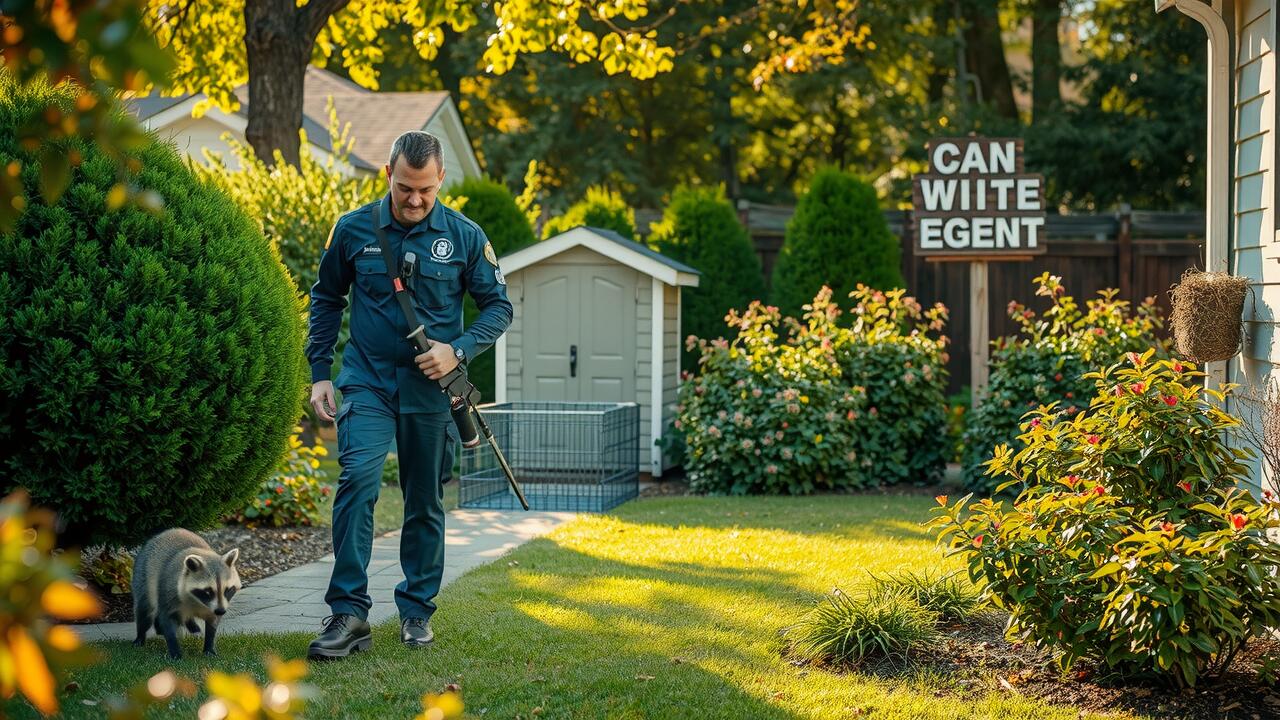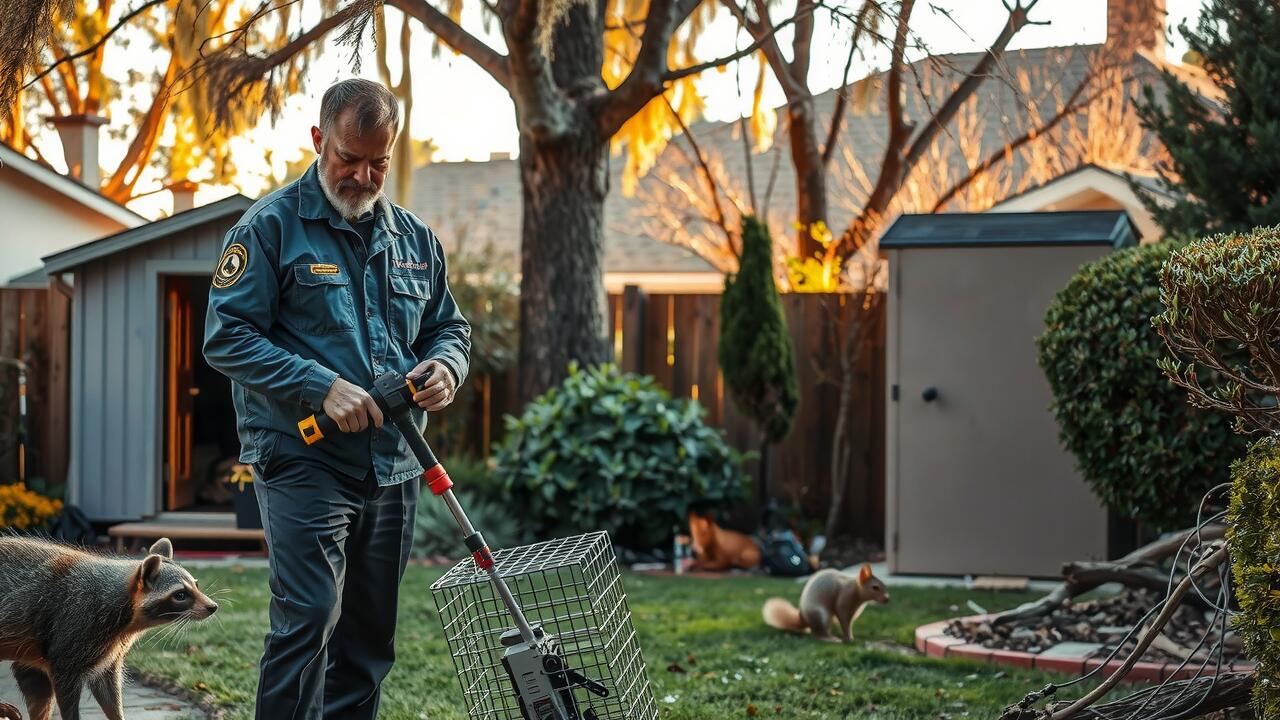
Natural Deterrents for Wildlife
Natural deterrents play a crucial role in keeping wildlife at bay from commercial properties. Utilizing native plants that produce strong scents can deter specific animals from approaching. Additionally, implementing physical barriers, such as fences or netting, can effectively keep unwanted wildlife out. These strategies not only protect property but also promote a harmonious environment with the surrounding ecosystem.
Engaging in commercial wildlife removal in Tomball, Texas, should complement these natural deterrents. Local experts can provide valuable insights into which methods are most effective for the specific wildlife challenges faced by businesses. By combining natural deterrents with professional guidance, property owners can create a safer and more welcoming atmosphere for both patrons and local wildlife.
Using Scents and Sounds Effectively
Scents and sounds can be powerful tools in deterring wildlife from encroaching on commercial properties. Utilizing certain scents that animals find unappealing, such as citrus or vinegar, can create an unfriendly environment that discourages their presence. Motion-activated devices that emit high-pitched sounds or predator calls can also be effective. These auditory deterrents not only startle wildlife but may condition them to associate the area with danger, prompting them to stay away.
For businesses in need of assistance, professional services like Commercial Wildlife Removal in Tomball, Texas, can provide tailored strategies. They often collaborate with property owners to implement a combination of scents, sounds, and other methods for maximum effectiveness. This professional approach ensures that the deterrents are suitable for the specific wildlife challenges faced by the commercial property. Regular evaluations can also help in adjusting the methods employed to maintain an effective preventive strategy.
Collaborating with Wildlife Professionals
Engaging with wildlife professionals is crucial for addressing wildlife issues effectively. Trained experts possess the knowledge and tools necessary to assess the specific needs of commercial properties. Their experience allows them to design tailored strategies that minimize wildlife intrusion while adhering to local regulations. Establishing a partnership with these specialists can lead to long-term solutions rather than temporary fixes.
In Tomball, Texas, agencies offering Commercial Wildlife Removal can help property owners navigate the complexities of wildlife management. These services often include initial consultations and site evaluations to identify potential risks. With ongoing support and monitoring, the relationship ensures proactive measures are in place to deter unwanted animals, protecting both the property and its occupants.
The Role of Local Wildlife Services
Local wildlife services play a critical role in managing wildlife interactions on commercial properties. They possess the expertise needed to identify potential issues early and recommend tailored solutions. These specialists evaluate properties for vulnerabilities that attract wildlife, ensuring a proactive approach to deterrence.
When facing challenges with wildlife, seeking assistance from professionals ensures compliance with laws and regulations. Commercial wildlife removal in Tomball, Texas, is best handled by trained experts who understand local species and their behaviors. Their intervention not only safeguards properties but also promotes coexistence with wildlife in a respectful manner.
Monitoring and Maintenance Practices
Regular inspections play a critical role in maintaining a wildlife-free environment for commercial properties. Property owners should schedule periodic assessments to identify potential entry points and signs of wildlife activity. A keen eye for details, such as droppings, tracks, or damage to structures, can help in detecting problems early. By addressing these issues promptly, businesses can significantly reduce the risk of infestations.
In addition to inspections, establishing a robust reporting system is essential for ongoing management. Employees should be trained to recognize and report any unusual wildlife activity immediately. Maintaining clear communication lines with wildlife professionals ensures that any emerging concerns are handled effectively. For comprehensive solutions, consulting experts in Commercial Wildlife Removal in Tomball, Texas can provide property owners with tailored strategies that enhance long-term prevention efforts.
Regular Inspections and Reporting
Regular inspections play a crucial role in maintaining a wildlife-free environment on commercial properties. Frequent assessments can help identify potential entry points and signs of wildlife activity. Property managers should establish a routine schedule for these inspections, ensuring that all areas, including basements, attics, and outdoor spaces, are thoroughly examined. This proactive approach allows for timely interventions before wildlife becomes an extensive problem.
Reporting findings from these inspections is equally important. Any signs of wildlife or damage should be documented and communicated to maintenance teams or wildlife management specialists. For those in need of support, seeking professional help, such as Commercial Wildlife Removal in Tomball, Texas, can provide effective solutions to any identified issues. Accurate reporting ensures that appropriate actions are taken swiftly, minimizing both risks to property and interruptions to daily operations.
FAQS
What are some natural deterrents for wildlife that can be used on commercial properties?
Natural deterrents include the use of specific scents, plants that repel animals, and the strategic installation of barriers like fencing to prevent wildlife entry.
How can sounds be used effectively to deter wildlife?
Sounds such as alarms, ultrasonic devices, or even controlled noise from motion-activated speakers can create an unsettling environment for wildlife, encouraging them to avoid the area.
Why is it important to collaborate with wildlife professionals?
Collaborating with wildlife professionals ensures that prevention methods are effective and humane, making sure that the wildlife is managed responsibly while also protecting your commercial property.
What role do local wildlife services play in wildlife prevention?
Local wildlife services provide expertise, resources, and solutions tailored to the specific wildlife challenges in the area, helping property owners implement proper prevention strategies.
How often should commercial properties conduct inspections for wildlife?
Regular inspections should be conducted at least quarterly, or more frequently during seasons when wildlife activity is higher, to identify and address potential issues early.
